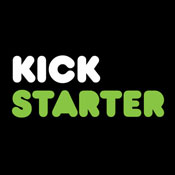What Really Works on Kickstarter
This is the final newsletter in a 3-part series on crowdfunding for documentary filmmakers. And this final newsletter is the best!
Thanks to all the filmmakers who wrote in to say what worked well on the Kickstarter or IndieGoGo campaign. Today I’m sharing five tips from you! Although your campaign may have ended, your sage advice will pay it forward!
First, get help, says Sarah Marder. “Have a team of people really committed to the campaign. Realize that the campaign will absorb a huge amount of time each day and that it takes a phenomenal amount of communications (much of which one-on-one and tailored) to receive donations.”
Sarah says if she were to do it again, she’s lengthen the period over which she tried to raise funds to take some of the pressure off. I concur. You can see her expired campaign at:
Second, plug the countdown. Leslie Eppeson, a former employee of PBS affiliates, says, her campaign raised almost $2000 on the last day.
“I re-learned what on-air fund raising for PBS had already taught–there is power in reminding people that your campaign is ending,” says Eppeson.
“Although I did not know this until later, one donor stayed up until midnight watching the campaign and adding key funds until the deadline, capping things off with a $10.00 donation to make sure we met the goal!”
See Eppeson’s campaign at:
www.indiegogo.com/Many-Bones-One-Heart
Third, consider having a fiscal sponsor that is separate from your Kickstarter campaign. Filmmaker Vince Casalaina says, “In the same pitch letter asking for donations to Kickstarter, I also told people that if they wanted to get a tax write off they could donate to the Snipe Class – a 501c3. I liked that I could send one pitch to my whole list and could hit two different groups of people.”
Casalaina raised almost twice as much through the 501c3 as through Kickstarter. See his campaign for “Serious Sailing, Serious Fun” at:
www.kickstarter.com/projects/1719722064/serious-sailing-serious-fun
Fourth, leverage a “chat room”. Here’s an original idea.
Alex at Video Pro says, “While on Facebook, open up the Chat Room to see who is on live and make a pitch to them directly. This allows direct dialog to answer their questions and get a commitment in real time.”
See the campaign for “Sturgeon Moon” at:
www.indiegogo.com/SturgeonMoon
Fifth, keep the faith. Haydn Faith, whose documentary is about poet/activist Robert Bly, says, “There will probably be days when the campaign feels stuck, i.e. no donations changing the total. At those moments remind yourself about everyone who has donated, how good it is to have that specific person’s support and encouragement. Remember the campaign is a marathon, not a sprint.”
Here’s the link to Haydn’s campaign:
indiegogo.com/robertblynewsoftheuniverse
Sixth, use innovative perks.
“Our approach to the incentives is different than anything I have seen on Kickstarter, says Dawn O’Keeffe. “Instead of giving hats, shirts, DVD’s, books, CD’s etc., we partnered with an angel donor who agreed to make a donation of supplies to local schools each time someone donated to the GO PUBLIC Project.”
Seventh, use volunteers.
“Our team of 10 volunteers have been sending press releases to our high schools and colleges to help spread the word beyond just our Facebook network,” says Rob Bethke. “Stay active even during the dry middle season!”
His campaign is at:
http://www.indiegogo.com/landofkim
You can see her campaign at:
http://www.kickstarter.com/projects/673059243/go-public-a-day-in-the-life-of-pusd?ref=live
Marcia Jarmel, an expert at social networking for filmmakers, has written an information-filled blog with several more tips, called “Lessons Learned From My Kickstarter Campaigns”:
http://www.bavc.org/Lessons-learned-from-my-Kickstarter-campaigns
Marcia’s Kickstarter campaign is at:
http://www.kickstarter.com/projects/540299498/got-balz-coming-of-age-with-baseballs-bagels-and-m
Finally, this advice from Daneen Akers, who raised nearly $300,000 for Seventh Gay Adventists, not through crowdfunding, but the good old fashioned way.
“We’ve worked very hard to cultivate authentic relationships both with those who give in $500 chunks and those who write $20,000 checks. I make sure when I’ve been in touch with people in genuine ways far before I make an ask, but I’ve also learned that I have to ask, and a specific ask gets much better results (as in, “We’re looking for $10,000 to do x, y or z.”)”
I hope that you’ve found these crowdfunding techniques helpful! I will resume this newsletter in 2013, so I can take a short break to focus on production of my own film, Bold Mother Hubbard: The Story and Vision of Barbara Marx Hubbard. Our successful and still active IndieGoGo Campaign is featured here:
